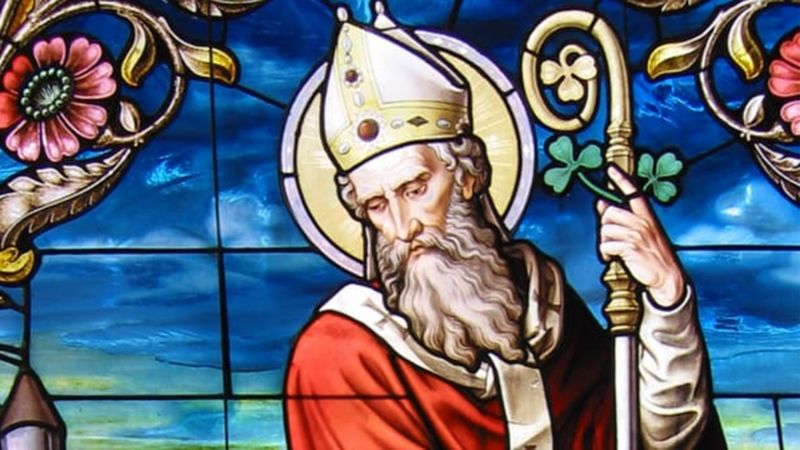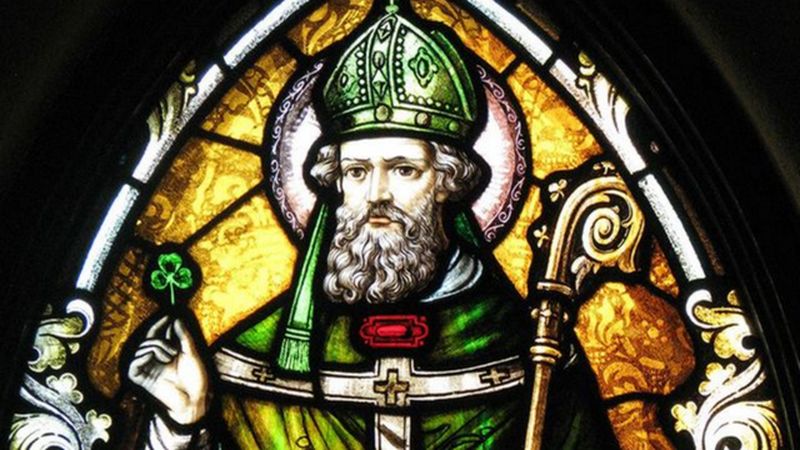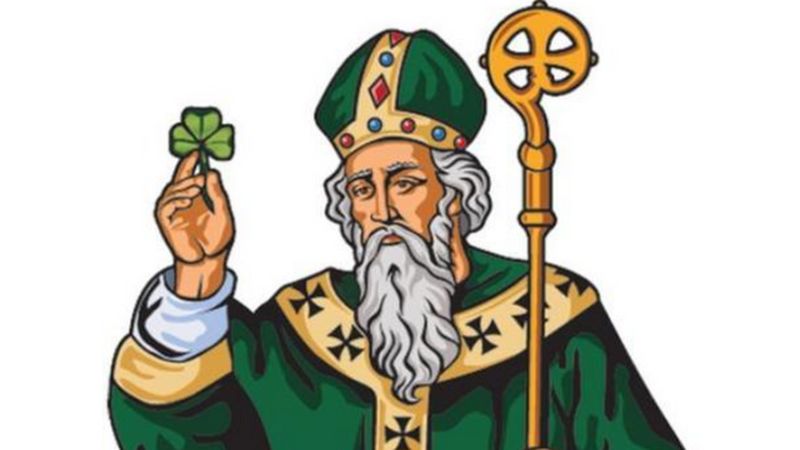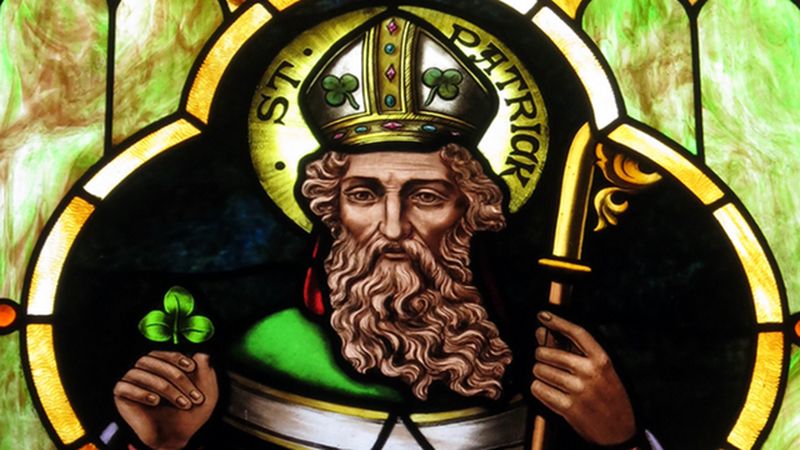It’s St. Patrick’s Day, and that means it’s time to celebrate by learning some fun facts about the Irish icon himself, Saint Patrick. While you may know some general facts about Saint Patrick, you may be surprised to learn some of these unbelievable facts about the patron saint of Ireland.
1. Saint Patrick Was Not Irish
This may come as a surprise, but Saint Patrick was actually born in Britain. He was kidnapped by Irish raiders at the age of 16 and taken to Ireland, where he was sold into slavery. He managed to escape six years later and returned to Britain, where he later returned to Ireland as a missionary.
2. Saint Patrick Used The Shamrock To Teach The Trinity
Since time immemorial, the shamrock has been associated with Saint Patrick, the patron saint of Ireland. The shamrock’s three leaves are said to represent the Christian holy trinity of the Father, Son, and Holy Spirit. Saint Patrick is said to have used the shamrock to explain the concept of the Trinity to the Irish people.
According to legend, Saint Patrick used the shamrock to illustrate how all three parts of the trinity were separate yet still connected and unified as one. He demonstrated this by picking a shamrock with three leaves, and then pointing out how each leaf was distinct, yet still part of the same plant. By doing so, Saint Patrick was able to effectively explain the concept of the Trinity to the Irish people in a manner that was simple and easy to understand.
The shamrock has since become a powerful symbol of Irish culture and identity, as well as a reminder of Saint Patrick’s teaching. The shamrock remains a popular symbol of Ireland to this day, and can be found everywhere from the national flag to the coat of arms. It is also a popular symbol on St. Patrick’s Day, where it can be seen adorning clothing, hats, and even decorations.
The Trinity is an important concept in Christianity, and its importance is echoed in the symbolism of the shamrock. Through the use of the shamrock, Saint Patrick was able to effectively teach the Irish people about the Trinity and its implications for their lives. As such, the shamrock will always remain a powerful symbol of the Irish people, their faith, and their culture.
3. He Was Never Canonized By The Church
Saint Patrick is often referred to as a saint, though he was never officially canonized by the Church. This is because the process of canonization in the early Middle Ages was quite different than it is today. During this time, canonization was an act of the pope or an ecclesiastical council, and was rarely done for people of Irish origin.
The Church began to recognize Saint Patrick in the 800s, when his disciples began to spread stories of his miracles and works of charity. By the 11th century, he was recognized throughout Europe as a saint. However, he was never formally canonized.
At the time, there were two main paths to canonization: either a miracle attributed to the person was confirmed by the Church, or the person was declared a saint by the pope or an ecclesiastical council. Saint Patrick did not meet either of these criteria, as there were no recorded miracles attributed to him during his lifetime, and he was never declared a saint by the Church.
Despite this, Saint Patrick is still widely venerated in the Catholic Church today. He is the patron saint of Ireland and is celebrated on the 17th of March, which is referred to as St. Patrick’s Day. He is also celebrated in other parts of the world, such as in the United States and in the United Kingdom.
Though Saint Patrick was never officially canonized, he is still revered as a saint and is held in high esteem among Catholics. He is remembered for his missionary work in Ireland and for his dedication to spreading the gospel. Though he was not officially canonized, his legacy continues to this day.
4. He Never Wore Green
St. Patrick’s Day is synonymous with green clothing and shamrocks, but the truth is, this interpretation is actually a modern adaptation. In reality, the traditional color associated with St. Patrick was blue. It wasn’t until the 17th century that green began to be associated with the patron saint of Ireland.
The earliest reference to green being associated with St. Patrick dates back to the famous Book of Ballymote, which was published in 1390. The book featured a poem that mentioned the phrase “wearing the color of St. Patrick” and described him in green.
The color green was likely adopted due to Ireland’s national flag, which is a combination of orange, white and green. The green symbolizes the people of Ireland, while the orange represents the Protestant minority and the white signifies peace between them. This is why the Irish flag has become synonymous with Irish patriotism and pride.
It wasn’t until the 20th century, however, that St. Patrick’s Day really began to be celebrated with green clothing and decorations. During the 19th century, blue was still the primary color representing St. Patrick. It wasn’t until after the Easter Uprising of 1916 that the Irish people began to wear and display green more prominently on St. Patrick’s Day.
So, while it is true that green is now the traditional color associated with St. Patrick’s Day, it was once blue. This just goes to show that the meaning of colors and symbols can change over time and that it is important to remember the original meaning of St. Patrick’s Day and keep it in mind when celebrating.
>> Read more: Celebrate St. Patrick’s Day 2023 in Style: A Guide to Making the Most of the Irish Holiday!
5. He Was Not The First To Introduce Christianity To Ireland
Saint Patrick is often credited with introducing Christianity to Ireland, but he was not the first to do so. Christianity had already been present in Ireland since at least the 4th century AD. Long before Saint Patrick arrived in Ireland, Ireland already had a strong Christian presence.
The first Christians to arrive in Ireland were Christian slaves and merchants from the Roman Empire. These early Christians were responsible for spreading the word of Christianity throughout the land. They set up churches, created monasteries, and taught Christian teachings to the people.
In the 6th century, Christianity was adopted by the Irish chieftains as the official religion of their kingdom. This was largely due to the influence of the Pope in Rome. The high kings of Ireland, including High King Diarmait mac Cerbaill, embraced Christianity and made it the official religion of their realm.
By the time Saint Patrick arrived in Ireland in the 5th century, Christianity had become a major influence in the country. He devoted his life to spreading the gospel and converting the Irish to Christianity. His efforts were successful and soon the majority of the Irish were Christian.
Today, Saint Patrick is remembered as the patron saint of Ireland and is credited with bringing Christianity to the island. However, his work was made much easier due to the fact that Christianity already had a strong presence in Ireland. Without the work of the early Christians, Saint Patrick would likely have faced a much bigger challenge.
6. He Is Not The Only Patron Saint Of Ireland
St. Patrick is often thought of as the sole patron saint of Ireland, but this is not the case. The other patron saint of Ireland is Saint Brigid. She was born around 450 A.D. in Faughart, County Louth and is believed to have been the daughter of a Druid. She is often credited with bringing the Gospel to Ireland and is the patroness of poets, smiths, and healers.
Saint Brigid is best known for founding a religious community at Kildare in the south of Ireland. This community is said to have been a center of learning and art, and the site of a perpetual fire that was never allowed to go out. Brigid was also known for her charity and her concern for the poor and the sick, and it is said that when a leper asked her for alms, she cut off her mantle and gave it to him.
In terms of her legacy, Brigid is celebrated in festivals throughout Ireland, and her feast day is celebrated on February 1st. Statues of her are found in churches and cathedrals, and her symbol is often that of a cross and a sun. She is also the patron saint of livestock, as well as of healers and poets.
In addition to being a patron saint of Ireland, Brigid is also the patron saint of many other countries, including Scotland, Germany, France, and Spain. She is also a patron saint of childbirth, and many midwives invoke her during labour. Her name is also associated with many places, including counties, parishes and villages throughout Ireland.
Brigid is therefore an important figure in Irish history and culture. Her legacy lives on to this day, and her spirit continues to inspire the Irish people. She is a reminder of the generosity, compassion, and courage of the Irish people, and her story will continue to be celebrated for generations to come.
These are just a few of the amazing and unbelievable facts about Saint Patrick. As you can see, there is much more to the Irish icon than meets the eye. So, when you celebrate St. Patrick’s Day this year, take some time to learn more about this amazing figure and all he has done for Ireland!
7. He Didn’t Speak Irish
Contrary to popular belief, Saint Patrick didn’t actually speak Irish fluently. Though he is credited with introducing Christianity to the island and is often associated with Irish culture, the truth is that the patron saint of Ireland didn’t speak the language.
Born in Britain around 385AD, Patrick was the son of a deacon and grandson of a priest. He received a classical education, which was the norm for an upper-class Roman Briton of his time. He was taught Latin, the language of the church, which would have been used to teach the gospel to the locals.
Although Patrick was familiar with the local language, he never learned it fluently. The idea that he spoke Irish probably stemmed from the fact that many of his writings were in Gaelic. He wrote in Latin, however, and his Latin works were what allowed his message to be spread across Europe.
Patrick’s mission was to teach Christianity to the Irish. He used Latin as the language of instruction, as it was the language of the Church. This allowed him to communicate with the educated classes of Ireland, who spoke Latin and understood it better than the local language.
Despite the fact that he couldn’t speak the local language, Saint Patrick still managed to bring Christianity to Ireland. His religious beliefs and teachings spread throughout the island and made a lasting impact on Irish history. Without Saint Patrick’s efforts, Christianity may have never taken root in Ireland.
It’s easy to understand why many people believe that Saint Patrick spoke Irish fluently. After all, he is responsible for bringing Christianity to the Irish. But the truth is that he spoke Latin, the language of the Church, which was the only way he could communicate his message to the locals.
8. He Is Credited with Establishing the First Irish Monasteries
Saint Patrick is credited with establishing the first Irish monasteries, which were instrumental in spreading Christianity throughout the country. Patrick was born in Britain, likely in the year 387 AD, and was taken to Ireland as a slave when he was 16 years old. There, he underwent a spiritual transformation and was inspired to convert the people of Ireland to Christianity.
Upon his return to Ireland in 432 AD, Patrick set about converting the country, preaching and baptizing people throughout the land. He established his first Irish monastery in the late 440s and it soon spread to other parts of the country. This monastery was the first of numerous others he founded throughout Ireland.
These monasteries served as centres of learning and provided religious instruction to the people of Ireland. Monks at these monasteries promoted education and scholarship, and helped to spread Christian values and beliefs throughout the country. The monasteries were also instrumental in preserving ancient Irish literature and culture.
While Patrick is credited with establishing the first Irish monasteries, the tradition of monastic life in Ireland had existed for centuries before his arrival. Historians believe that early Christian settlements known as hermitages were common in the Irish countryside, although they were less formal than the monasteries Patrick established.
Today, the legacy of Saint Patrick can be seen in the numerous Irish monasteries that still exist. These monasteries have been integral to the religious, cultural, and educational life of the Irish people for centuries, and are seen by many as a source of national pride.
9. He Is Honored All Over the World
Saint Patrick’s Day is one of the most celebrated days in the world. Every year on March 17th, people all over the world come together to honor Saint Patrick, the patron saint of Ireland. The holiday has a long history, with roots in the 5th century. It was a day to celebrate the arrival of Christianity to Ireland, as well as a day of recognizing the importance of Irish culture. Today, it is still celebrated as a religious, cultural, and social occasion.
In Ireland, Saint Patrick’s Day is marked by parades and parties, with plenty of music and dancing. Special foods are served, such as barmbrack, a sweet bread with fruits, and colcannon, a mix of potatoes, cabbage, and bacon. In some cities, the festivities take on a more secular tone, with pubs and taverns hosting lively gatherings.
In the United States, Saint Patrick’s Day is celebrated in many ways. Some cities hold parades, with marching bands, floats, and plenty of green. Others mark the day with festivals, concerts, and food specials. In some cities, buildings and monuments are lit up in green to honor the day.
All over the world, Saint Patrick’s Day is a day to celebrate Irish culture. Whether it’s parades, music, food, or just taking the time to appreciate Irish heritage, it’s a day to honor and remember the legacy of Saint Patrick.
10. He Wasn’t a Bishop
The oft-repeated claim that Saint Patrick was a bishop is simply not true. The man we now celebrate as one of the most beloved saints in the Christian world and the patron saint of Ireland was never officially given the title of bishop.
In truth, Saint Patrick was a humble cleric and missionary who was born in Britain in the late 4th century and brought to Ireland as a slave. He later escaped and returned home to Britain, where he trained as a priest. Upon returning to Ireland, he was ordained a priest by the local bishop and began his mission of spreading the Gospel.
Though he was a priest, Saint Patrick was never given the title of bishop. In fact, the Catholic Church did not even have the same structure and hierarchy at the time of his mission as it does today.
Despite the fact that he was never officially a bishop, Saint Patrick’s legacy has endured and grown over the centuries. His commitment to spreading the word of God and his dedication to converting the Irish to Christianity made him a much-revered figure and a symbol of Ireland’s national pride.
So, while it’s true that Saint Patrick was never a bishop, he was still an important and influential figure in our world today. His mission to spread the Gospel and his commitment to serving God is something we should all strive to emulate in our own lives.
So there you have it — ten unbelievable facts about Saint Patrick. From his Romano-British origins to his mission to spread Christianity, the man beh







